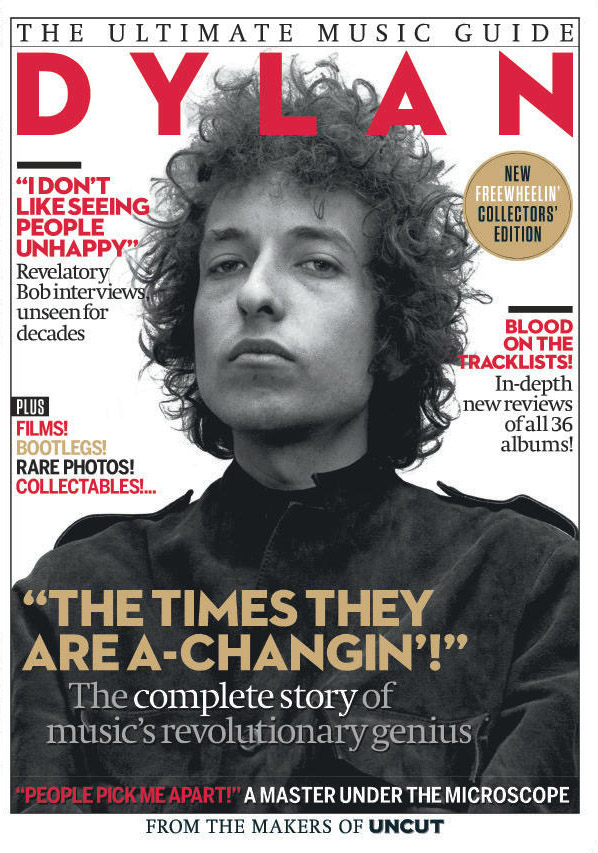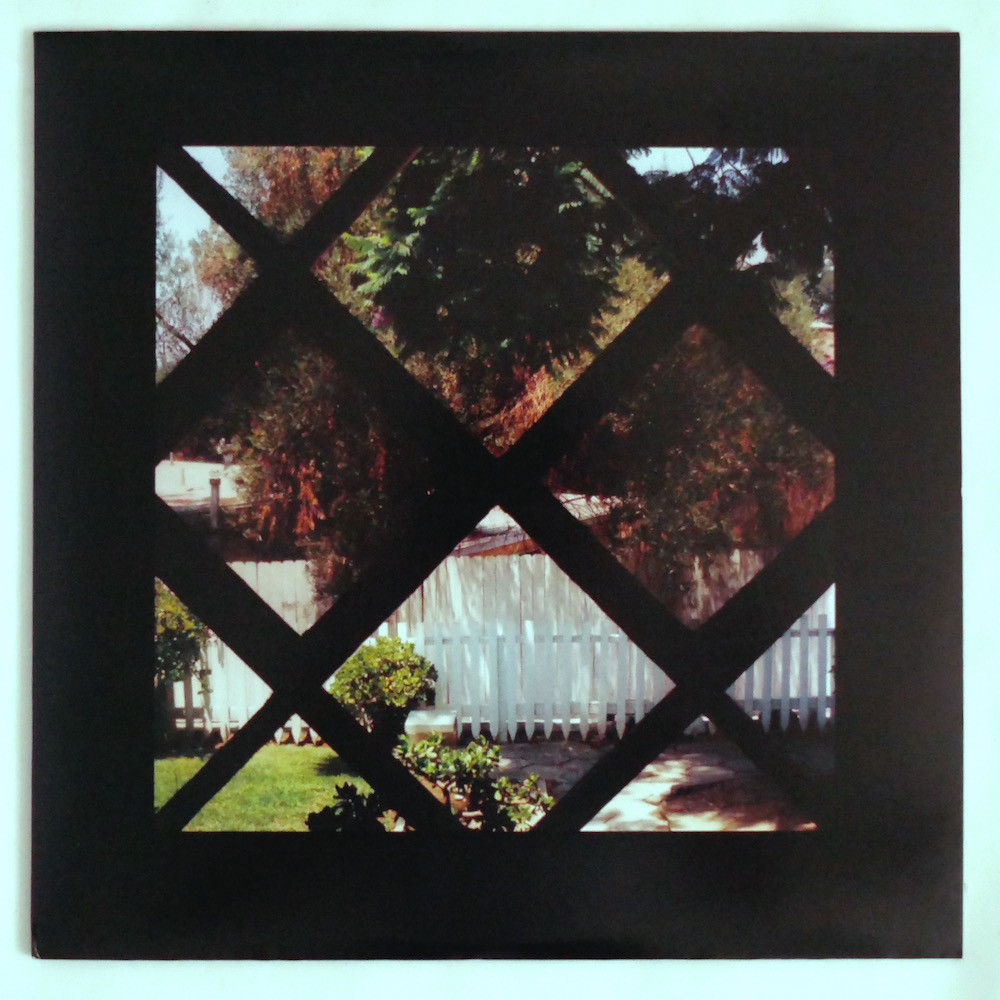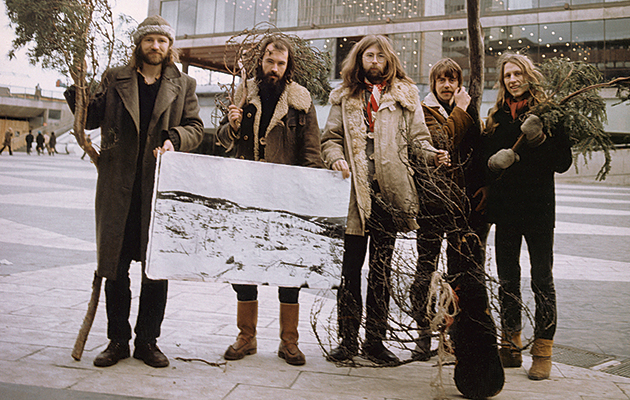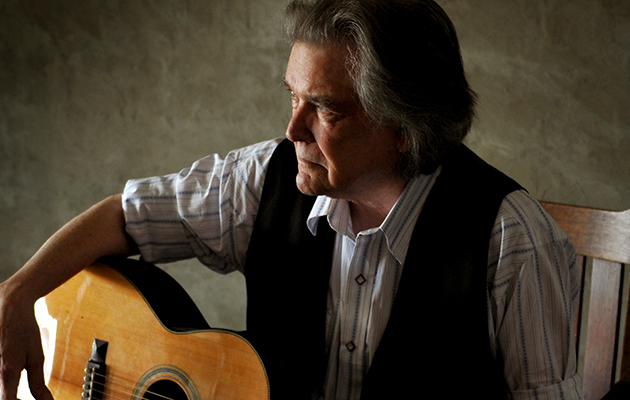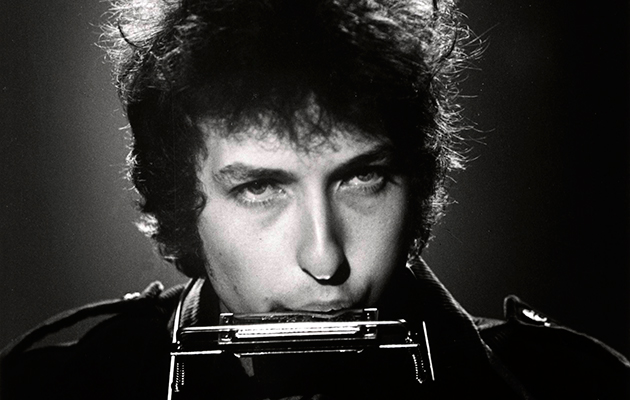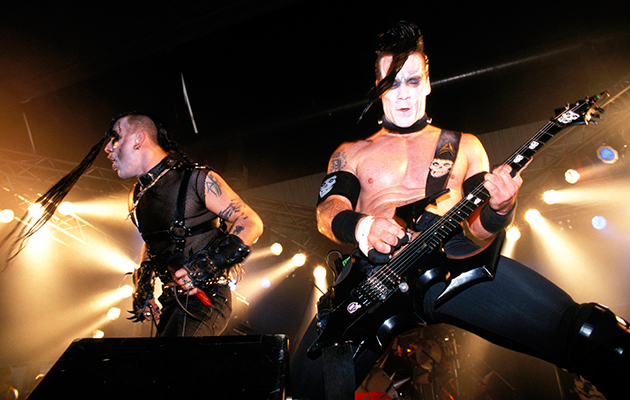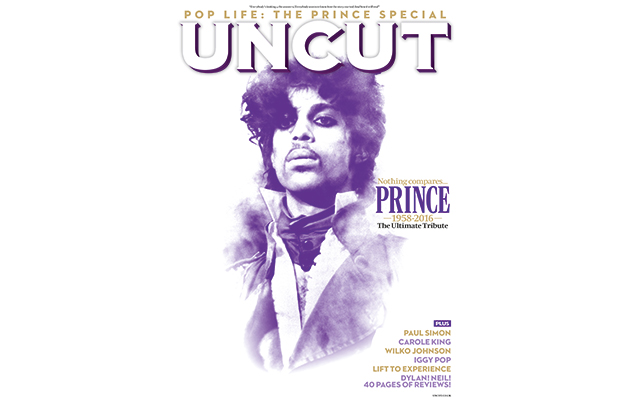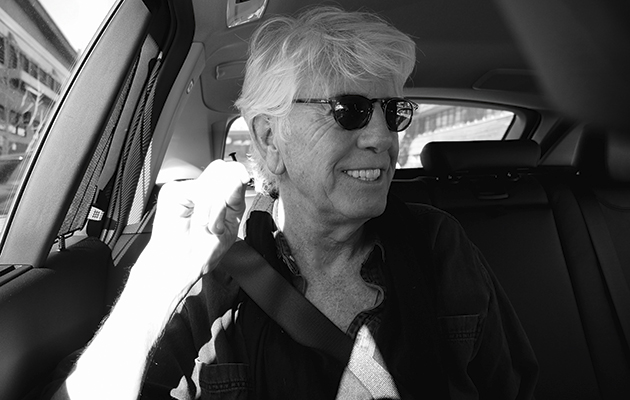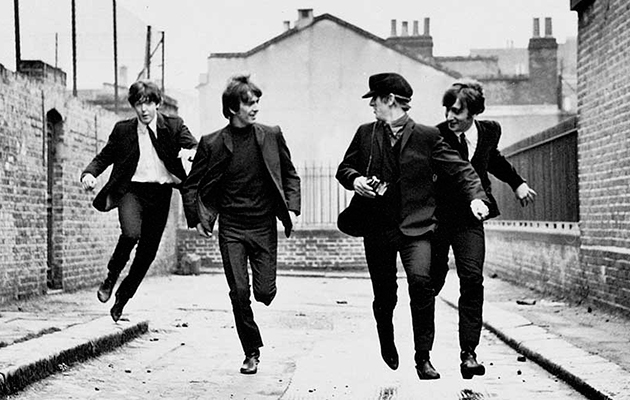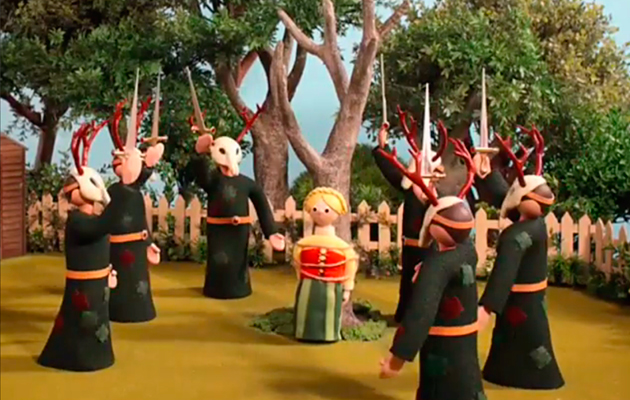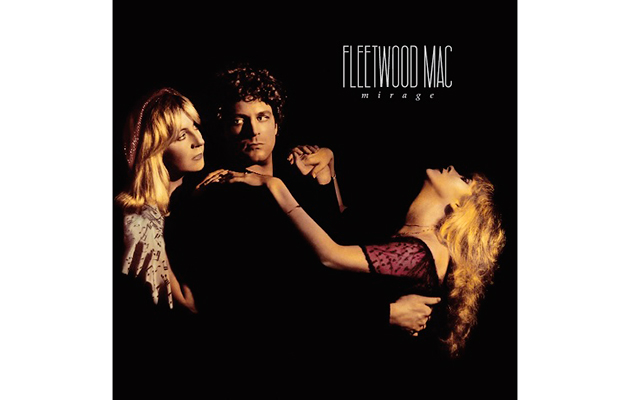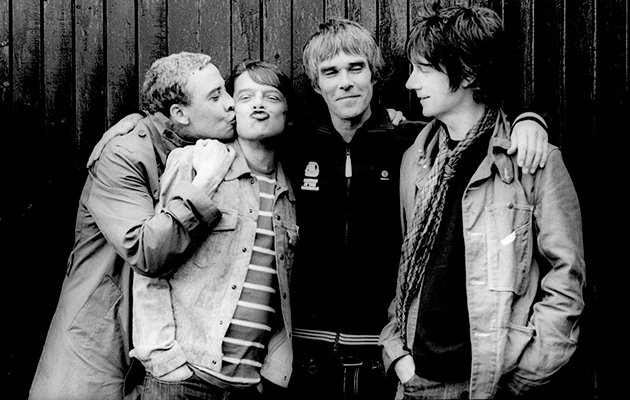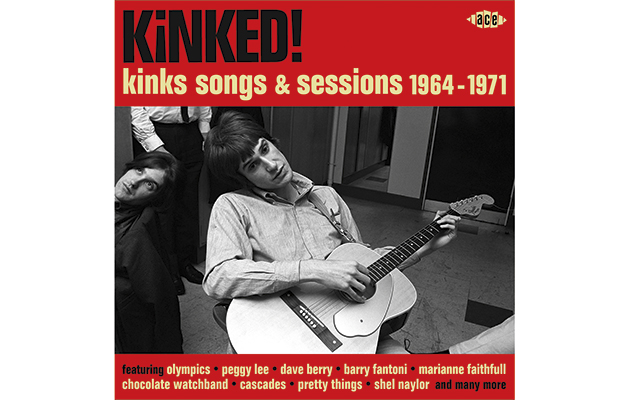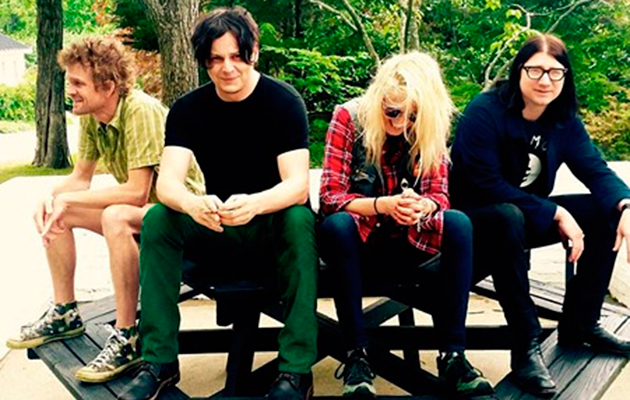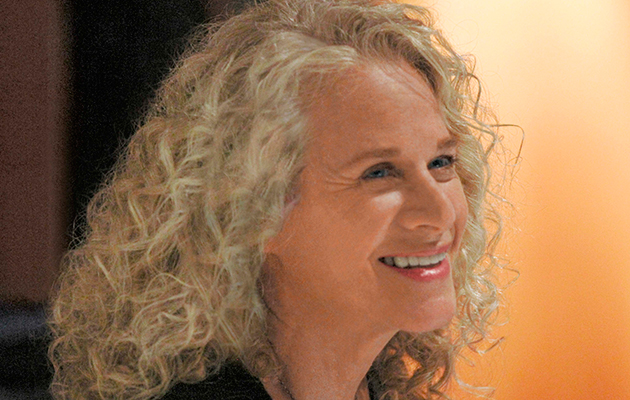Years in the making, Uncut proudly presents one of their greatest Ultimate Music Guides to date; a special issue dedicated entirely to Bob Dylan. We tell the complete story of an extraordinary career, using rare interviews and features rediscovered in the NME and Melody Maker archives. “One thing I know is that you can’t please everybody,” Dylan told one lucky interviewer in 1964. “I’m good, kind, gentle, I think – mean no harm to anybody; but people pick me apart.”
Over 50 years on, Uncut’s team of esteemed writers have taken a new opportunity to pull Dylan apart. We’ve written in-depth new pieces on all 36 of his storied albums, from 1962’s Bob Dylan to this year’s Shadows In The Night; 36 valiant, insightful attempts to unpick a lifetime of unparalleled creativity, in which the rich history, sounds and stories of America have been transformed, again and again, into something radical and new. In which Bob Dylan has revolutionised our culture, several times, more or less single-handedly. That’s the Ultimate Music Guide: a master under the microscope!
Ultimate Music Guide: Bob Dylan
The 16th Uncut Playlist Of 2016
A few notes on what I think is a pretty interesting playlist. Again, please hunt down via Bandcamp the Psychic Temple take on Eno, because it’s rapidly becoming one of my favourite records of the year, and the straighter “III” album is growing on me, too (Just read a very interesting piece on Psychic Temple at Aquarium Drunkard that I should recommend, while I’m on the subject).
Lots of quasi-ambient/4th World trips around as you can probably tell from the presence of, among others, the Laraaji & Sun Araw hook-up. The Claire M Singer album is really strong (sorry I have no music to play you from that, as yet), but do check out the Rob Frye extract; it’s one of the guys from Bitchin Bajas making music predicated upon and incorporating a bicycle wheel. Bill Mackay, who made that neat duo record with Ryley Walker last year, is involved.
Also the Sara Watkins record is nice, and the Karl Blau album is, maybe unexpectedly, growing on me. And finally, the new Floating Points single is out of this world, and wait ’til you hear these new Van live CDs…
Follow me on Twitter @JohnRMulvey
1 Psychic Temple – Plays Music For Airports (Bandcamp)
2 Laraaji & Sun Araw – Professional Sunflow (Superior Viaduct)
3 Radiohead – A Moon Shaped Pool (XL)
4 Rhyton – Redshift (Thrill Jockey)
5 Super Furry Animals – Bing Bong (Strangetown)
6 Teenage Fanclub – Kickabout (Creation)
7 Karl Blau – Introducing… (Bella Union)
8 Emma Russack – In A New State (Spunk!)
9 Claire M Singer – Solas (Touch)
10 Andy C Jenkins – Lazy Coast (Paper Brigade)
11 The Julie Ruin – Hit Reset (Hardly Art)
12 Metronomy – Summer 08 (Because)
13 Sara Watkins – All The Wrong Ways (New West)
14 Lou Rhodes – Theyesandeye (Nude)
15 Hannah Georgas – For Evelyn (Dine Alone/Caroline)
16 Van Morrison – It’s Too Late To Stop Now Vol II (Sony)
17 Josienne Clarke & Ben Walker – Through The Clouds EP (Rough Trade)
18 Rob Frye – Flux Bikes/Sueñolas (Lake Paradise Records)
19 Psychic Temple – III (Asthmatic Kitty)
20 Floating Points – Kuiper EP (Pluto)
21 Van Morrison – It’s Too Late To Stop Now Vol III (Sony)
22 Badbadnotgood – IV (Innovative Leisure)
23 Chris Robinson Brotherhood – Narcissus Soaking Wet (Silver Arrow)
24 Les Halles – Transient (Not Not Fun)
Träd, Gräs Och Stenar – Träd, Gräs Och Stenar
One of the key groups from the Swedish free music counterculture, Träd, Gräs Och Stenar’s history is complex, but tracing their narrative is essential to anyone getting to grips with the Scandinavian underground. They first came together as Pärson Sound, whose music, performed at Free School happenings and experimental art festivals, revealed a heavy totality, predating the free-rock of groups like The Dead C. From there, they shape-shifted through various other collective projects – as International Harvester, they released Sov Gott Rose-Marie in 1968, and then, the following year, as Harvester, the lovely Hemåt. Their fourth mutation, Träd, Gräs Och Stenar (Trees, Grass & Stones), was by far the longest-serving, and the one that worked hardest to realise the collective’s early aims, as articulated by organist Torbjörn Abelli: “how could one find a music with potential to transform the sense, a music that could make way for the new world order?”
This boxset contains their two, self-released live albums – 1971’s Djungelns Lag (The Law Of The Jungle) and Mors Mors (Mother Mother), from 1972 – along with a third double-album of previously unreleased material, Kom Tillsammans (Come Together), drawn from archival recordings of early ’70s performances. To be fair, it’s hard to peg the unreleased material as revelatory in any real sense: it’s more of the same, but with a group who pinned their aesthetic to the ever-changing singular, these newly unearthed live tapes confirm that the startling quality of Träd, Gräs Och Stenar’s music was not a construction of judicious post-performance editing – they naturally played at such a level.
You could make comparisons with the Grateful Dead, perhaps, as good parts of Träd, Gräs Och Stenar come across like the Dead just before they get truly gone: Träd, Gräs Och Stenar never quite enter the rudder-less zones of, say, “Dark Star” at its most elliptical, but the way the group’s guitars wrestle with each other – quietly, slowly, winding around each other like DNA double helixes – can feel like Garcia and company either working to a head, or unspooling from a peak moment. This only makes Träd, Gräs Och Stenar more compelling: it’s as though the group are collectively holding a moment, looking at it from all angles, letting light refract from the prism with multi-hued force. It’s a great example of ‘free festival’, traveller psych-rock, totally absorbed by and in thrall to the moment, heading toward the no-mind and fully intent on getting there.
Uncut: the spiritual home of great rock music.
Guy Clark dies aged 74
Guy Clark has died this morning (May 17) in Nashville, aged 74.
The singer, guitarist and songwriter released 14 albums. including 1975 debut Old No 1, in a career spanning well over 40 years. His compositions have been performed by artists such as Johnny Cash (“Let Him Roll”), Brad Paisley (“Out In The Parking Lot”), Ricky Skaggs (“Heartbroke)”, and Rita Coolidge, Jason Isbell, The Highwaymen and Jerry Jeff Walker (all “Desperados Waiting For A Train”).
Clark was born in Monahans, Texas, in 1941 and during his early career was heavily influenced by Townes Van Zandt and other pioneers of ‘outlaw country’. After releasing his debut in 1975, he followed up with the equally successful albums Texas Cookin’ (1976), Guy Clark (1978) and The South Coast Of Texas (1981).
Settled in Nashville, Clark mentored a number of younger country artists, including Steve Earle and Rodney Crowell, as demonstrated in the 1981 film Heartworn Highways, re-released earlier this year.
Clark’s final album, 2013’s My Favorite Picture Of You, was awarded the Best Folk Album award at the 2014 Grammys. Over the last decade, Clark experienced ill health and received treatment for cancer. His wife, songwriter Susanna Clark, died in 2012.
Uncut: the spiritual home of great rock music.
Bob Dylan fans mark 50 years since “Judas” gig
Fans are marking 50 years since Bob Dylan‘s infamous concert at Manchester’s Free Trade Hall, where the singer-songwriter was heckled and called “Judas”.
Dylan was performing a second, electric set, backed by The Hawks – who of course would later become The Band – when an audience member heckled and many in the crowd applauded. “I don’t believe you… you’re a liar,” said Dylan before launching into a raucous “Like A Rolling Stone”.
The first half of the May 17, 1966 gig, which featured Dylan playing solo acoustic songs such as “Visions Of Johanna”, “Desolation Row” and “Mr Tambourine Man”, was warmly received, yet some in the crowd believed that the electric second half, which included loud versions of “Just Like Tom Thumb’s Blues”, “Ballad Of A Thin Man” and closer “Like A Rolling Stone”, was evidence of Dylan betraying his folk roots and the protest movement that many had placed him as the spokesperson for.
“We had all read that this was going to be electric,” Mark Makin, a fan who was present that night, told the BBC. “They were all just hopeful that it might not.
“Everybody was whisper quiet [during the acoustic set]. These days, everyone roars with the recognition of the first line. It never happened then. You didn’t dare miss a second of it. I suppose there was an expectation that he might not [play electric], he just might carry on – because we had such a good first half, he might just do more of the same.”
Author and musician Dr CP Lee recalls the electric half of the gig, explaining: “Throughout the second half, people started slow hand-clapping. Groups of people were standing up, facing the stage accusingly and then walking out. There were random shouts here, there and everywhere.”
The identity of the person who shouted “Judas” is still unknown, with Lee stating that both Keith Butler and John Cordwell claimed to have done so.
The gig was released as part of Bob Dylan’s Bootleg Series in 1998, titled The “Royal Albert Hall” Concert in recognition of the confusion around the location of the concert.
Uncut: the spiritual home of great rock music.
Misfits reunion sparked by the deaths of David Bowie and Prince
Misfits frontman Glenn Danzig has revealed that the group’s reunion has been inspired by the deaths of David Bowie and Prince.
The American punks’ classic lineup have reunited for the first time in 33 years, and will play at September’s Riot Fest in Chicago and Denver.
As Danzig told Rolling Stone, the deaths of Bowie and Prince had a significant impact on their decision to perform together again: “It’s been a shock to see so many musicians dying this year. A lot of them weren’t really that old. David Bowie’s death came out of the blue, as did Prince’s.
“And I’ve said it before with Peter Steele and Dio: If you’re a music fan, you think these artists will be here forever, but you should enjoy them while they’re here, because you never know what will happen. You’ve got to enjoy it and let it happen before everybody dies.”
Danzig is confident that he, bassist Jerry Only and guitarist Doyle Wolfgang von Frankenstein can pull off some successful performances.
“It may have never happened, but it is going to happen for at least two shows. We’ll see how it goes. It may lead to some other work, but who knows how it’s going to turn out? I mean, I don’t think it’s going to be a disaster; I think it’s going to be incredible.”
Uncut: the spiritual home of great rock
Introducing our new issue of Uncut…
This week’s new edition of Uncut was to have featured our third female cover star in a row: Carole King, with Graeme Thomson’s deep piece on the making of “Tapestry” timed to coincide with King performing that entire lovely album live in London’s Hyde Park.
You can still read Graeme’s story in the new issue, along with Michael Bonner’s revealing chat with Paul Simon (Simon tells him a very good joke, perhaps surprisingly); Andy Gill’s trip to Portland to meet the supergroup of Neko Case, KD Lang and Laura Veirs; stuff about Iggy Pop, Lift To Experience, 10cc, Wilko Johnson, William Tyler, Allen Ginsberg’s musical career, Belly and Lush; plus reviews of the new Bob Dylan and Neil Young albums, and me going a bit over the top about the brilliant Irish singer, Brigid Mae Power.
Our cover story, though, is another product of unhappy circumstance. David Cavanagh’s exceptional memorial to Prince Rogers Nelson covers a lot of ground, as it needs to with such a superhumanly productive and eclectic musician as its subject. There is plenty of time, though, to reflect on the profound impact and implications of Prince’s art, and to draw wise counsel from some suitably august sources.
“Miles Davis,” writes Cavanagh early in his piece, “believed Prince to be a synthesis of three of the greatest entertainers in history: Jimi Hendrix, the flamboyant free spirit of the guitar; James Brown, the commander of funk who drove his band like Diaghilev; and Charlie Chaplin, comedy’s epitome of pathos, but a strong-willed auteur behind the camera who demanded – and was given – full artistic control. Davis, like many others, became obsessed with Prince on hearing 1999, the double-album that took a Cold War premise (we’re all going to die in a nuclear war) and urged us to celebrate like the euphoric crowds on VE Day. ‘He’s the music of the people who go out after ten or eleven at night,’ Davis marvelled. ‘He comes in on the beat and plays on top of the beat. I think when Prince makes love, he hears drums instead of Ravel.'”
It’s tempting to keep quoting nuggets like this from the feature: those of you who enjoyed and maybe took some solace from David’s recent pieces on David Bowie and Sir George Martin will hopefully have a good idea about the sort of authoritative, emotionally engaged piece of work we’re looking at: once again, I’m proud to be publishing it in our magazine.
Anyhow, this special issue is going to be on sale a little earlier than usual – on Thursday in the UK, I believe. We’re also putting a bunch of copies into our online shop (they should be in stock any moment now), alongside the motherlode of Ultimate Music Guides and History Of Rock volumes: if you’ve been collecting the latter, incidentally, you may be interested to know that we have a new supply of the first History Of Rock, for 1965, back in stock. And since, as I type, I’m playing the new Caledonia Soul Orchestra expansion of “It’s Too Late To Stop Now Vols II, III & IV”, I should give one more plug to our Van Morrison Ultimate Music Guide; that’s there, too. Listen to the lion, everyone…
Graham Nash – This Path Tonight
Fourteen years have passed since Graham Nash’s last solo album, Songs For Survivors, but as he tells Uncut, he has hardly been idle in the intervening period. Since 2002 Nash has released a mammoth retrospective boxset, Reflections, been involved in CSN and CSN&Y tours, and overseen compilations of the band’s demos and greatest hits. He was also engaged in the writing of his 2013 memoir, Wild Tales, a process which appears to have brought about a period of intense and very personal reassessment.
Belying the time that has elapsed between solo releases, This Path Tonight was conceived in haste and born of compulsion. At 74, Nash was inspired by what he describes as “dramatic and traumatic changes” in his personal life – notably the end of his 38-year marriage to his wife, Susan. His response was to write 20 songs in a month with sometime CSN guitarist Shane Fontayne, and record the results in a little over a week.
The ten tracks chosen for the record cluster around themes of regret, separation, new love and an enveloping awareness of mortality (three excellent bonus tracks are more politically agitated in their themes, and were presumably sheared off to preserve the album’s sense of unity). Musically, the mood is warm and intimate. The styles range from hushed acoustic balladry to driving electric rock, but the performances share a spare and sinewy immediacy. Nash and his five-piece band recorded together live in the studio, and you can tell. Even when the prevailing mood of introspective understatement threatens to sink into the maudlin or overwrought, there’s an urgency about This Path Tonight which keeps things buoyant.
Many of these songs are set in the middle of the night, Nash eyes-wide awake and agonising over old choices and pressing new decisions. The solid, satisfying thud of the opening title track establishes the questioning tone, Nash hovering at the crossroads and wondering, “Where are we going?” On the twilit ruminations of “Myself At Last”, he asks “Is my future just my past?” as a lonesome harmonica wails out a warning. Bittersweet nostalgia is a recurring theme. The first verse of “Golden Days” gazes back fondly to The Hollies – “We sang with all our hearts and everything we had” – before taking in the somewhat more turbulent narrative of CSN&Y: “What happened to all you need is love?” Nash wonders. By the end, the good old days give way to a hard-won appreciation of the here and now.
“Cracks In The City”, a country-folk lament in waltz time, is a richly allegorical gaze on a crumbling world, where “all the king’s horses are dying of thirst”. Keening pedal steel sends a chill wind whistling through the alleyways. At this point, the thought occurs that This Path Tonight could be Nash’s very own Blood On The Tracks, but he’s too much the idealist to let darkness entirely overpower him, while his gentle, conversational voice – still with trace elements of no-nonsense Lancashire – has always leaned towards optimism.
It helps that his winning way with a good tune hasn’t deserted him. “Another Broken Heart” is Nash’s most direct comment on his marriage break-up and subsequent relationship with photographer Amy Grantham, but the soul-searching is leavened by the album’s sweetest and most instantly memorable melody. “Fire Down Below” is a crackling minor-chord rocker, with something of the prowl and punch of plugged-in Neil Young. Perhaps in acknowledgement of the fact that he’s inhabiting such familiar terrain, Nash surrounds his voice with a starburst of glorious harmony.
The most evocative and otherworldly vocal performance, however, is saved for the terrific “Back Home”. Subtitled “(For Levon)”, it’s a meditative and downright spooked take on mortality, concluding with a kind of cosmic acceptance. It’s followed by the closing “Encore”, nothing less than a rock valediction, a measuring out of what matters and what endures beyond the adulation and the acclaim. “What are you gonna do when the last show is over/What’re you gonna do when you can’t touch base,” Nash sings softly. “And what’re you gonna do when the applause is all over/And you can’t turn your back on what you face?” The answers provided by This Path Tonight to these thorny questions are conflicted and equivocal: take each day as it comes, face up to the burdens of the past, and embrace love where you may find it – and somehow keep on keeping on.
Uncut: the spiritual home of great rock music.
The Beatles’ press officer Tony Barrow dies aged 80
The Beatles‘ press officer Tony Barrow has died, aged 80.
Barrow, who invented the phrase “the Fab Four” in one of his early press releases for the group, passed away on Saturday (May 14) in Morecambe, Lancashire.
Through his job at Decca, Barrow secured Brian Epstein‘s charges an audition at the label. Though they famously failed the trial, once they had signed to EMI, The Beatles’ manager took on Barrow full-time in 1963 to look after press for the roster of artists he managed at NEMS Enterprises. Barrow’s duties ranged from sometimes accompanying the group on tour and chairing press conferences, to writing album sleevenotes and editing the Magical Mystery Tour cartoon book.
He continued to work with The Beatles until late 1967, when the group set up Apple Corps to look after their affairs. Barrow then started his own business, Tony Barrow International, representing The Kinks, the Bay City Rollers, David Cassidy, The Monkees and more, before returning to writing, most notably with his 2006 memoir John, Paul, George, Ringo & Me.
Paul McCartney has paid tribute to Barrow, tweeting: “Tony Barrow was a lovely guy who helped us in the early years of The Beatles. He was super professional but always ready for a laugh. He will be missed but remembered by many of us.”
Uncut: the spiritual home of great rock music.
Radiohead have “tarnished the brand” of Trumpton, says creator’s son-in-law
Radiohead have “tarnished the brand” of Trumptonshire with their “Burn The Witch” video, according to the son-in-law of creator Gordon Murray.
The band’s video for the song, their first release from album A Moon Shaped Pool, featured stop-motion animation and settings seemingly inspired by Murray’s television trilogy, Trumpton, Chigley and Camberwick Green.
Speaking to The Mail On Sunday, William Mollett, Murray’s son-in-law, stated that they consider the video to be a breach of copyright: “Radiohead should have sought our consent as we consider this a tarnishing of the brand. It is not something we would have authorised. We consider that there is a breach of copyright and we are deciding what to do next.”
In the video, directed by Chris Hopewell, an outsider is shown around a small village, before being placed inside a giant effigy, a la 1973 film The Wicker Man, and burned. However, an epilogue shows him unharmed and escaping.
Mollett explained that he would not be showing Murray the video, saying: “Gordon would be appalled.”
A Moon Shaped Pool reached Number One on the UK albums chart on Friday (May 13), as well as in Ireland and Norway, Number Two in Australia and New Zealand, Number Three in the US, Holland, Sweden and Finland, Number Four in Italy, and Number Six in France.
Uncut: the spiritual home of great rock music.
Day Of The Dead reviewed!
In Heads, his new history of psychedelic America, Jesse Jarnow has a neat phrase for the Grateful Dead fans who have infiltrated the broader music world over the past 40-odd years. They are, he suggests, “an invisible contingency”, counter-cultural insurgents at the heart of “nearly every white American musical scene, no matter how punk or country or electronic or classical” it might be. Jarnow’s book is full of revelations about the Dead’s reach, but the tasteful denizens of indie-rock are mostly conspicuous by their absence. For a generation of music fans and music-makers who came of age in the ‘80s and ‘90s, an abiding disdain can be summed up in his quoting of one of Kurt Cobain’s old t-shirt slogans: “KILL THE GRATEFUL DEAD.”
And yet, even this demographic, so historically wary of hippies, turns out to have an “invisible contingent”. Day Of The Dead is a vast survey of covert Deadheads, corralled by Aaron and Bryce Dessner from The National. In 2009, the Dessners put together Dark Was The Night, a compilation which raised funds for AIDS research, and provided a handy primer on the contemporary indie scene. The Day Of The Dead is very much a sequel to that, and a testament to how the Dessners, and indie-rock itself, have expanded their horizons in the interim.
At times, the prevailing spirit of The Grateful Dead is hard to locate, even though all 59 tracks here are technically covers of their songs (or of songs, like “Morning Dew”, which they adopted). There is precious little jamming, not much in the way of boogie, only the occasional foray into stranger musical dimensions, and a general understanding that it may be a mug’s game to try and match the guitar ambulations of Jerry Garcia.
What it does showcase is the robustness and multi-purpose potential of Grateful Dead songs. “Easy Wind” can be turned into a lugubrious campfire slouch by Bill Callahan, “Cumberland Blues” into snaking psych-funk by Charles Bradley and the Menahan Street Band. Fucked Up can repurpose “Cream Puff War” as bombastic post-hardcore, while Senegal’s Orchestra Baobab make Afro-Cuban intricacy out of “Franklin’s Tower”. Little here, though, will provoke bold and non-prejudicial new perspectives on the participants. Mumford & Sons, most pointedly, render “Friend Of The Devil” as something more or less indistinguishable from their own Wilder Mind album.
That album, of course, was produced in part by Aaron Dessner, and Day Of The Dead emphasises the National’s position at a rare musical nexus, with stadium-filling production clients on one side, avant-garde compadres on another, and the rump of this century’s most lucrative college rockers – Justin Vernon, Jim James, The War On Drugs et al – sat comfortably alongside them in the middle.
Their influence spreads beyond curation, since most of The National appear on nearly half of the 59 tracks. The Dessners and Devendorfs are at the core of a flexible and discreet house band who, nevertheless, seem to turn much of this transformative material into music which is decent and meticulous, but which rarely captures the spirit of risk, the high times and potential for disaster, critical to the Dead’s appeal. A case in point is the take on “Terrapin Station” fronted by Daniel Rossen of Grizzly Bear, which Dessner and his cohorts recreate as orchestrated chamber-pop. It’s a rousing technical feat, and undoubtedly ambitious in scope. You fear, though, for the Grateful Dead neophyte who ventures forth into the band’s own catalogue and discovers a much messier and, at times, scarier world than the one manifested here.
Those brave newcomers also may be surprised by the swing and danceability of the Dead, an aspect frequently avoided by the staunch footsoldiers assembled by the Dessners. One wonders whether a fear of latterday jam bands like Phish, and the goofy funk which is part of their DNA, kept the grooves mostly at bay. The plasticky Prince affectation of Unknown Mortal Orchestra’s “Shakedown Street” is, in context, a welcome outbreak of partying.
Still, Day Of The Dead contains multitudes, and each pass through reveals new pleasures: Bonnie ‘Prince’ Billy and Hiss Golden Messenger making rootsy capital out of “Ruben And Cherise” and “Brown-Eyed Women”; Terry Riley and his son Gyan finding a cosmic raga in “Estimated Prophet”; Kurt Vile and J Mascis being adorably faithful to “Box Of Rain”; Cass McCombs’ heroic exploration of “Dark Star”; Steven Malkmus having the guts to take a flurry of solos on the canonical Dead jam of “China Cat Sunflower > I Know You Rider”. These are wonderful efforts, and Day Of The Dead is an exemplary way of proving to a sceptic that at the heart of the Dead’s extravagant digressions are imperishably great songs.
A taste of what lies beyond comes, perversely, as an afterthought – a ragged live version of “St Stephen” in which guitars spiral ever upwards, sometimes haphazardly, and the harmonies are, as Dead fans will appreciate, at best approximate. The players are Wilco, a creative road band who currently might be the closest thing indie-rock has to a workable Grateful Dead analogue. And their guest? “Talk about your plenty, talk about your ills,” sings none other than Bob Weir, “One man gathers what another man spills.”
Bombino – Adez
As a key voice in Tuareg music, Omara ‘Bombino’ Moctar carries a heavy weight, not that you would notice from the lightness he has traditionally brought to his songs. He first broke international cover thanks to the Sublime Frequencies label run by Alan Bishop of Sun City Girls – indeed, Bishop deserves greater recognition for his ongoing support of modern Tuareg rock, particularly through such series as Guitars From Agadez, of which Bombino’s debut album ‘proper’ was the second instalment.
While the romance afforded to Tuareg music belies a colonial impulse that tries to inscribe its specific tonal and rhythmic properties as a subset of the dreaded ‘world music’, there’s a lot more than generic constraint going on in the music of artists such as Bombino. It builds from specific structural conceits intrinsic to the Berber musical identity – there is not such a great leap from the call-and-response typical of Berber and Iberian song, and some of the rhythmic undertow isn’t too far from the spiralling percussives of Moroccan music.
The most recent wave of Tuareg music, though, politicised by uprising, has a feverish cast, something you can hear throughout Azel, even if Moctar’s voice weaves gently around the melodies, an instrument of grace skimming across the turbulent undercurrents of geopolitical address in some songs. It’s particularly pertinent given Adez’s introduction of his new, self-named sub-genre, ‘Tuareggae’, a development explored keenly by both the group and their producer, Dave Longstreth of the Dirty Projectors.
Moctar’s reasoning is fairly simple: “I love reggae music,” he states, “it makes me instantly happy… it is just another influence that has come into my music as it evolves in the same way that Western rock music mixes with Tuareg music in other songs that I play.” But it’s also clear enough to see another level – the meeting of two musics of protest, the eschatological fervour of reggae, chanting down Babylon, delivered on the graceful wings of dub’s pressurised production, meeting the gracious heart and tangled melodicism of Tuareg desert rock.
Throughout Azel, the combination of the two genres allows for an even greater sense of uplift and collectivism in a music that always carried the communal at its core. Moctar’s guitar playing is often the focal point of Azel – a limber guitarist, he rarely gives in to flights of fancy: while he can charm the instrument through curlicues of melodic invention, each riff tightly woven, he never gives in to any tendency to showboat. The end result is an approach to the guitar that lets the instrument breathe, even as it’s being wound around itself with rare physicality.
As with other Bombino albums, Azel often feels like an ever changing same. For some artists, this would suggest one-trick pony: for Bombino – much like Marc Bolan, oddly enough, whose vocal lilt Moctar strangely reminds of – each repetition has incremental power, resulting in a sum greater than the parts. But certain songs do stand out, such as the album’s centrepiece, “Iyat Ninhay/Jaguar (A Great Desert I Saw)”, a six-minute monster that maintains a paradoxical ‘laidback intensity’ that, these days, feels peculiar to Tuareg music. It also shifts effortlessly between sections, from a luxurious, extended introduction that lets riffs fall from the guitar strings, to a low-slung middle section, Moctar teasing out a Lissajous-figure solo, before accelerating to a fever-pitch finale.
The following “Igmayah Dum (My Lover)” has Moctar on the acoustic guitar, his introductory string-tangle reflective, drifting between notes before landing on a dime, the song pivoting on a pedal note that’s insistent in its restatement. It’s one of Moctar’s most gorgeous melodies, too, for the way it threads through the central riff. His playing here accesses a wild freedom even as it stays pinned to the ground by the song’s hypnotism: it reminds of one of his statements, in an interview with Bob Baker Fish, when asked what it means for Moctar to play guitar: “Freedom. That’s it. Pure freedom.”
In some ways, this second half of Azel is where Bombino’s elemental power really accrues. This is often the case with Tuareg rock – a music of cumulative force, it can take a little while for albums by Bombino, or peers like Tinariwen or Tamikrest, to work their magic. The hooks are there, though, waiting for the moment of enchantment to sink into the skin. By the time you’ve reached the penultimate song on Azel, “Timidiwa (Friendship)”, whose guitar tone is just the right side of rough and ready, Moctar’s songs have located the tightly wound spring at the core of Tuareg music.
Uncut: the spiritual home of great rock music.
The 15th Uncut Playlist Of 2016
Hideously late here, but do especially check out Numbers 1, 2 and 19, and HAPPY BIRTHDAY STEVIE WONDER!
Follow me on Twitter @JohnRMulvey
1 Idris Ackamoor & The Pyramids – We Be All Africans (Strut)
https://soundcloud.com/philophon/idris-ackamoor-the-pyramids-rhapsody-in-berlin-part-1#t=0:00
2 Chris Robinson Brotherhood – Narcissus Soaking Wet (Silver Arrow)
3 Radiohead – A Moon Shaped Pool (XL)
4 Mendrugo – More Amor (Fire)
5 Moon Bros – These Stars (Western Vinyl)
6 Neil Young & The Promise Of The Real – Earth (Reprise)
7 Ian William Craig – Centres (Fat Cat)
8 Lubomyr Melnyk – Illirion (Sony Classical)
9 Paul Simon – Stranger To Stranger (Universal)
10 Mudcrutch – Mudcrutch 2 (Warner Bros)
11 Rhyton – Redshift (Thrill Jockey)
12 Plaid – The Digging Remedy (Warp)
13 Various Artists – Space Echo: The Mystery Behind The Cosmic Sound Of Cabo Verde Finally Revealed (Analog Africa)
14 The Monkees – Good Times! (Rhino)
15 The Stone Roses – All For One (EMI)
16 Super Furry Animals – Bing Bong (Strangetown)
17 Dylan Carlson – Falling With A Thousand Stars And Other Wonders From The House Of Albion (Self-Released)
18 Stevie Wonder – Don’t Know Why I Love You (Motown)
19 Thee Oh Sees – Live In San Francisco (Castleface)
Sturgill Simpson – A Sailor’s Guide To Earth
Sturgill Simpson has a few predictions about the reactions he’ll get for his third album. “I’m sure there’ll be all kinds of hyperbole and pontification,” he tells Uncut not long after A Sailor’s Guide To Earth was ready for outsiders’ ears. His tone contains a mixture of embarrassment over the effusive praise he’s attracted over the last two years and exasperation over some of the claims made on his behalf since he was anointed as Nashville’s latest epitome of all that is good and true and real in country music, a heavy mantle he shares with fellow upstarts Jason Isbell and Chris Stapleton. Simpson knows his new album – his first since signing with Atlantic last year – may not go down so well in more conservative quarters. “I’m sure I’ve ‘abandoned’ country,” he groans. “Whatever – I can’t worry about that shit.”
With A Sailor’s Guide to Earth, Simpson has thrown one giant, loopy, gorgeous and wild curveball in the direction of anyone who thought they had him sussed out. Ranging far and wide from swampy, horn-heavy R&B to bucolic Moog-enhanced soundscapes to lush, strings-laden balladry to unbridled rock abandon – sometimes all in the space in the same song – it’s an album whose musically expansive nature is just as impressive as its conceptual ambition and emotional heft. Drawing heavily on his own experiences, feelings and fears, Simpson’s song cycle assumes the perspective of a lonely sailor who’s been away from home for far too long and who expresses his love and longing in letters to his son and wife. That nautical theme is further suggested by the occasional noises of birds, water and ship bells that recur between tracks and intermingle with the string and pedal steel parts to create an appropriately watery sense of flow in the album’s gentlest passages, like the graceful early moments of the opening track “Welcome to Earth (Pollywog)”. “Hello, my son, welcome to the Earth/You may not be my last but you’ll always be my first,” Simpson croons in his sturdy baritone. It’s an achingly lovely moment yet the music here never stays placid for long – what starts as a moving ballad about the transformative experience of new parenthood takes a hard left turn to become an exuberant Stax-style showstopper.
Like any work with this level of ambition and scope, A Sailor’s Guide To Earth could’ve easily crashed on a reef if any single one of its elements went wrong. That may be why we don’t often get to hear genre-busting concept albums about forlorn seafarers. But it’s a telling indication of the degree of daring and sophistication at hand that artistic gestures which might have seemed contrived or ill-conceived in other contexts – like, say, transforming Nirvana’s “In Bloom” into a majestic country-soul ballad worthy of Charley Pride – yield some of the most startling results.
Of course, there were early indications that the 37-year-old Simpson was hardly on the path of a new traditionalist even if that’s what he most resembled at the time of 2013’s High Top Mountain, an engaging set of old-school C&W that garnered comparisons with Waylon Jennings but paid more fealty to Ricky Skaggs and Keith Whitley. Before Simpson made his belated breakthrough as a solo act, he wielded a Telecaster in Sunday Valley, a band with a knack for playing bluegrass at a volume and velocity more suited to speed metal (A Sailor’s Guide To Earth includes a touching revamp of “Oh Sarah”, an expression of devotion and a plea for patience that was one of the sweetest songs in the band’s repertoire).
As for High Top Mountain’s much-lauded 2014 follow-up Metamodern Sounds In Country Music, the references to Buddha and psilocybin in “Turtles All The Way Down”, the stately reinvention of When In Rome’s “The Promise” and the psych-rock flourishes of “It Ain’t All Flowers” demonstrated Simpson’s eagerness to venture beyond Americana’s established frontiers.
A grimy slice of ZZ Top-derived sleaze that serves as the theme for the HBO series Vinyl, “Sugar Daddy” was another harbinger of Simpson’s direction, even though that track was actually recorded several months after the new album was finished late last year. With Simpson serving as his own producer – largely the result of the jam-packed schedule for his friend Dave Cobb, who produced Sturgill’s first two albums before handling chores for Isbell and Stapleton, too – A Sailor’s Guide To Earth was recorded in an astonishing four-day sprint in Nashville’s Butcher Shoppe studio with engineer David Ferguson. Simpson spent two more days for horns and strings at Atlantic Studios in New York, enlisting the Dap-Kings. Their contributions add further punch to “Keep It Between The Lines”, a swaggering country-rocker in which Simpson’s surrogate sailor dispenses advice to his youngster (“Do what I say, don’t do what I’ve done/It don’t have to be like father, like son”). Elsewhere, they enhance the sweep of “All Around You”, a soul ballad with a grandeur befitting Otis Blue, and amplify the fury of “Call To Arms”, a crazed collision of Southern rock, hard funk and berserker bluegrass in which Simpson’s sailor angrily bemoans the state of the world his baby son will someday inherit.
Though that closer is the stormiest song on the album by a wide margin, even the most delicate moments on A Sailor’s Guide To Earth have traces of its bravado. Really, the whole endeavour is born of a drive to express himself in whatever musical ways befit his needs. Rather than seem unduly highfalutin, its overarching tale of a man at sea (in several senses of the phrase) provides a through-line for a series of musical settings and emotional sentiments that might’ve seemed excessively eclectic. Simpson’s sense of humour – especially in “Sea Stories”, a caustic account of his messy stint in the US Navy – further imbues his song-cycle with great warmth and humanity. And whatever the naysayers may say about the all-inclusive vision of American music he offers here, Simpson hasn’t abandoned country – he’s just made it big enough to contain all he wants to do. The man’s only boundary now is the horizon.
Uncut: the spiritual home of great rock music.
U2 reveal iNNOCENCE + eXPERIENCE – Live In Paris
U2 have announced details of their new project.
iNNOCENCE + eXPERIENCE – Live In Paris will be released on Blu-ray, DVD and digital download on June 10 on Island Records.
The hour film, directed by Hamish Hamilton, includes guest performances by Eagles of Death Metal and, on the deluxe version, by Patti Smith, which also features behind-the-scenes documentary, additional music videos and live tracks and a tour of the visuals narrated by Gavin Friday.
The Standard DVD features 30 tracks, the Deluxe DVD and Blu-ray formats come with bonus material including Gavin Friday’s guide to “Cedarwood Road”, a behind-the-scenes piece with director director Hamish Hamilton’s behind-the-scenes documentary, on-stage tour videos for “The Wanderer” and “The Troubles” as well as six music videos commissioned for single releases from Songs of Innocence.
A Super Deluxe Box collection include all of the above as well as an exclusive USB lightbulb, a 64-Page hardback book, dog tags, stencil set, pin badges and a download.
Tracklisting for the deluxe eversion is:
People Have The Power
The Miracle (Of Joey Ramone)
Vertigo
I Will Follow
Iris (Hold Me Close)
Cedarwood Road
Song For Someone
Sunday Bloody Sunday
Raised By Wolves
Until The End Of The World
The Fly
Invisible
Even Better Than The Real Thing
Mysterious Ways
Elevation
Every Breaking Wave
October
Bullet The Blue Sky
Zooropa
Where The Streets Have No Name
Pride (In The Name Of Love)
With Or Without You
Stephen Hawking ‘Global Citizen’
City Of Blinding Lights
Beautiful Day
Mother & Child Reunion
Bad
One
People Have The Power (With Eagles Of Death Metal)
I Love You All The Time (Eagles Of Death Metal)
Bonus Material
Cedarwood Road – A Gavin Friday Narration
Out Of Control (December 6th 2015 – Paris)
The Future Better Hurry Up
The Electric Co. (November 11th 2015 – Paris)
i + e – Behind The Scenes With The Director
Bad / People Have The Power (With Patti Smith – December 6th 2015 – Paris)
The Wanderer
The Troubles
Music Videos
Ordinary Love
Invisible
The Miracle (Of Joey Ramone)
Every Breaking Wave – A Film By Aoife Mcardle
Song For Someone (Directed By Vincent Haycock)
Song For Someone (Behind The Scenes)
Song For Someone (Directed By Matt Mahurin)
Uncut: the spiritual home of great rock music.
Fleetwood Mac announce Mirage reissue
Fleetwood Mac have announced details of a deluxe edition for their 1982 album, Mirage.
The release follows on from Rumours and Tusk.
Released on July 29, this new edition expands on the original album with newly remastered sound, a selection of rare and unreleased recordings, as well as the stories and pictures behind the album.
It will be available in the following formats:
Deluxe : Three CDs, DVD and LP. Original album remastered, plus b-sides and rarities; the original album on LP; live performances; and a 5.1 mix on DVD.
Expanded: Two CDs. Original album remastered, plus a disc of b-sides and rarities.
Remastered: Original album remastered.
A digital version will also be available.
The tracklising for the Deluxe edition is:
Disc One: Original Album – 2016 Remaster
“Love In Store”
“Can’t Go Back”
“That’s Alright”
“Book Of Love”
“Gypsy”
“Only Over You”
“Empire State”
“Straight Back”
“Hold Me”
“Oh Diane”
“Eyes Of The World”
“Wish You Were Here”
Disc Two: B-Sides, Outtakes, Sessions
“Love In Store” (Early Version)*
“Suma’s Walk” AKA “Can’t Go Back” (Outtake)*
“That’s Alright” (Alternate Take)*
“Book Of Love” (Early Version)*
“Gypsy” (Early Version)*
“Only Over You” (Alternate Version)*
“Empire State” (Early Version)*
“If You Were My Love” (Outtake)*
“Hold Me” (Early Version)*
“Oh Diane” (Early Version)*
“Smile At You” (Outtake)*
“Goodbye Angel” (Original Outtake)*
“Eyes Of The World” (Alternate Early Version)*
“Wish You Were Here” (Alternate Version)*
“Cool Water”
“Gypsy” (Video Version)
“Put A Candle In The Window” (Run-Through)*
“Teen Beat” (Outtake)*
“Blue Monday” (Jam)*
*Previously Unissued
Disc Three: Mirage Live 1982
“The Chain”
“Gypsy”
“Love In Store”
“Not That Funny”
“You Make Loving Fun”
“I’m So Afraid”
“Blue Letter”
“Rhiannon”
“Tusk”
“Eyes Of The World”
“Go Your Own Way”
“Sisters Of The Moon”
“Songbird”
Disc Four: 5.1 Surround Mix & 24/96 Stereo Audio of Original Album (DVD)
Uncut: the spiritual home of great rock music.
The Stone Roses’ resurrection: Ian Brown, John Squire, Mani and Reni speak
Originally published in Uncut’s June 2006 issue (Take 109).
It’s the rock reunion fans crave more than any other: Brown, Squire, Mani and Reni together onstage again. But could it happen? We catch up with Manchester’s own Fab Four to pop the question, starting with Ian Brown, the Rose who went from washed-up icon to Godlike Genius for a new generation. Interviews by Stephen Dalton, additional reporting by Hamish MacBain.
_____________________________________
IAN’S STORY
March 2006, and King Monkey is swinging from the ceiling of his record label offices, grinning as he tapes over the smoke alarm for an illicit nicotine break. At the end of 12 months that have seen an acclaimed hits album, his biggest shows so far, and a cocksure comeback as Britrock’s prodigal prince, Ian Brown is on a high. For the first time in a decade, he seems like a man with nothing to prove.
In person, Brown is gangly, angular and super-lean. There may be flecks of grey stubble around those 43-year-old Bruce Lee cheekbones, but the Scally Superstar aura remains intact. Think young George Best meets anorexic Che Guevara. He also laughs more than you might expect for a self-confessed “belligerent northern bastard”.
And he talks. Boy, does he talk. About old friends and bitter enemies. About smack and crack. About prison and politics. About religion, racism and Roses reunion rumours. About all the highs and lows of two decades inside the filthiest business in the universe.
Ten years ago, The Stone Roses broke up in a slow-motion car crash of acrimony, ego and drugs. Following their disastrous Reading finale in August 1996, Brown was widely written off as a no-hoper. But four solo albums, one remix collection and a best-of later, he is back on world-beating form.
Suddenly, teenage bands like the Arctic Monkeys are namechecking him. Young fans who never knew the Roses are surfing his cosmic stoner frequencies. The NME has even conceded that Brown’s solo work now eclipses that of his former band, giving the singer its Godlike Genius award in February.
_________________________________
So how does it feel to be Ian Brown in 2006?
IAN BROWN: “Amazing. I used to think, how many LPs do I have to put out for them to say I’m a music-maker in my own right? But I feel I’m getting there now. Having all these new bands who were two- or three-years-old when the Roses came out telling me I’m their hero amazes me. It makes me feel like I must have done something right. I believe in that phrase anyway: your good works will follow you through.”
Do you feel like a Godlike Genius?
“It’s like when they chant my name at gigs, it goes in one ear and out the other. But if someone offers it, I’m not going to turn it down. I know ‘genius’ comes from the Arab word ‘djinn’, which means spirit.”
So you’ve noticed the tide turning in your favour?
“Definitely. I started managing myself in October 2004, and since then it’s gone up and up. I think the goodwill of all the years is just catching up. Maybe when I went to Strangeways, they thought I was a thug, and it’s taken a few years to prove I’m not. And I’ve got to shake off the love for the Roses. They’re never going to let it go about us reforming.”
Which takes us back, inevitably, to 1970s Manchester…
Various Artists – Kinked! Kinks Songs & Sessions 1964-1971
There have been no shortage of major artists covering Kinks song over the years – from The Jam to The Fall, from The Stranglers to the Pretenders, from Bowie to Costello, Madness to Blur, Van Halen to Metallica, Big Star to Bruce Springsteen. Not to mention the Blue Aeroplanes, and Yo La Tengo, and Kirsty MacColl, and The Raincoats, and Jimmy Buffett, and Green Day… and on, and on.
However, less well known are the many Ray Davies songs that were barely even performed by The Kinks before being farmed out to other artists. By the start of 1964, even before “You Really Got Me” and “All Day And All Of The Night” had turned The Kinks into stars on both sides of the Atlantic, manager Larry Page was touting the Davies brothers around Tin Pan Alley. Dave’s rudimentary three-chord number “One Fine Day” was released in March 1964 by 17-year-old howler Shel Naylor – the recording is notable for featuring both Jimmy Page and John Paul Jones in the backing band. Released simultaneously came the girl-group the Orchids’ shouty version of “I’ve Got That Feeling”, a slightly more sophisticated Ray composition that The Kinks would later record on their debut album.
From this point on, it was Ray’s songs that Larry Page started to sell as he tried to break the States. “So Mystifying”, a simple, up-tempo, Rolling Stones-indebted thrasher from the first LP, was recorded in December 1964 by African-American doo-wop band The Olympics (best known for their version of the rock’n’roll standard “Hully Gully”). This wonderfully chaotic recording – featuring Glen Campbell, Don Randi and Sonny Bono among the stellar sessionmen – has remained unreleased until now, possibly because the vocals stray out of tune on more than a few occasions. Another Californian vocal outfit, The Cascades, performed Ray’s “I Bet You Won’t Stay” – a fine piece of baroque pop where their massed harmonies surf over an elegant harpsichord backing.
Even more prestigious was a commission from Peggy Lee: Davies provided the bel canto verses and precise, staccato chorus lines of “I Go To Sleep” with her in mind. Lee’s reading of this waltz sounds a little fast and flippant (especially compared to the Pretenders’ funereal 1981 hit) but it remains a fascinating example of how Davies wrote for other artists. “I’m Not Like Everybody Else”, for example, was written for the Animals, although the howling, proto-metal 1968 version by California’s Chocolate Watchband turned it into something of a garage rock standard.
Dave Berry’s version of “This Strange Effect” was a minor hit with in 1965, as was the Honeycombs’ “Something Better Beginning” (which has been replaced here by their version of Ray’s Beatle-ish “Emptiness”). But, surprisingly, little else made the UK chart. One rare success was “Dandy”, a jaunty music-hall number about a womanising cad, apparently inspired by Michael Caine’s Alfie and brother Dave in equal measure. Never released as a single in the UK, it was – much to Ray’s chagrin – a Top Five US hit for Herman’s Hermits, who add a rather wobbly string line to The Kinks’ own acoustic arrangement.
The Kinks sold well in France, and, in 1966, Petula Clark recorded a French-language version of “A Well Respected Man” (“Un Jeune Homme Bien”). Produced by Tony Hatch, it fits Frank Gérald’s lyric so comfortably that you’d barely imagine that it was anything but a French song. Other Ray Davies compositions also resemble Gallic chansons: the uncharacteristic “Oh What A Day It’s Going To Be”, is rendered as a dramatic Jacques Brel-style ballad by Mo & Steve (a budget-priced Walker Brothers from Manchester). Meanwhile, Davies’ art-school pal Barry Fantoni – a caustic TV presenter and Private Eye cartoonist – sings a wonderful obscurity called “Little Man In A Little Box” that sounds like one of Serge Gainsbourg’s low-key epics.
The removal of Ray Davies’ voice also forces us to see his songs as theatrical constructs, performed in character, not least when they’re being sung by female singers such as Marianne Faithfull. “End Of The Season”, here recorded by Brummie mods The Uglys, is sung in the character of a dissolute aristocrat. “I just can’t mix in all the clubs I go,” complains the gently reactionary narrator. “Now Labour’s in, I have no place to go.” Likewise, when Ray sang the boss-baiting “A House In The Country” – surely an unheralded precursor to Blur’s “Country House”? – he did so with a rather embattled fury; the Pretty Things here provide a Stonesy version that treats the protagonist with a gleeful envy.
There are other fine songs on this album, and equally fascinating stories. “All Night Stand”, for instance – here performed by Peter Beckett’s Scouse combo The Thoughts – was commissioned as the soundtrack to the movie adaptation of a racy piece of pulp fiction about the dark side of the music business. And there are dozens of other covers that didn’t make it: by the artists here along with the likes of Cher, Lesley Duncan, Ray McVay, Formula One, Majority, Lemmy and the Rockin’ Vickers, not to mention a whole LP of easy listening instrumentals from Larry Page’s Kinky Music. A volume two surely awaits…
Uncut: the spiritual home of great rock music.
Has Jack White formed a new band?
Third Man Records have posted a photo on their Facebook page with the tantalising message, ‘Which band is this?’
The photo shows Jack White, Alison Mosshart, “Little” Jack Lawrence and Brendan Benson.
White and Mosshart and both members of The Dead Weather, Benson partners White in The Raconteurs while Lawrence is a member of both The Dead Weather and The Raconteurs.
Is this simply four friends snapped while hanging out; or is the message teasing yet a new music project from White and his resourceful musical friends?
Meanwhile, White will release a live album and DVD taken from his first acoustic tour.
The tour, which took place last year, consisted of several intimate shows in American states that he had never played before: Alaska, Wycoming, Idaho, North Dakota, South Dakota and Fargo. The set list consisted of solo material and White Stripes and Raconteurs covers.
It is being released as part of the Vault package series, released by his record label, Third Man Records.
Uncut: the spiritual home of great rock music.
Win tickets to see Carole King perform Tapestry live in concert
Carole King is playing her legendary album Tapestry in full this year as part of the annual Barclaycard presents British Summer Time Hyde Park festivities.
King will play Hyde Park on Sunday, July 3 on a bill that also includes Don Henley and Louise Goffin, singer-songwriter daughter from her marriage to songwriting partner, Gerry Goffin.
We’re delighted to give away TWO pair of tickets to the show.
To be in with a chance of winning, just answer this question correctly:
Who produced Tapestry?
Send your answer along with your name, address and contact telephone number to UncutComp@timeinc.com by noon, Monday, June 27.
A winner and a runner-up will be chosen from the correct entries and notified by email. The editor’s decision is final.
The winners tickets will be available to collect from our box office on the day.
You can find out more details about the show and other events by clicking here.
Uncut: the spiritual home of great rock music.


